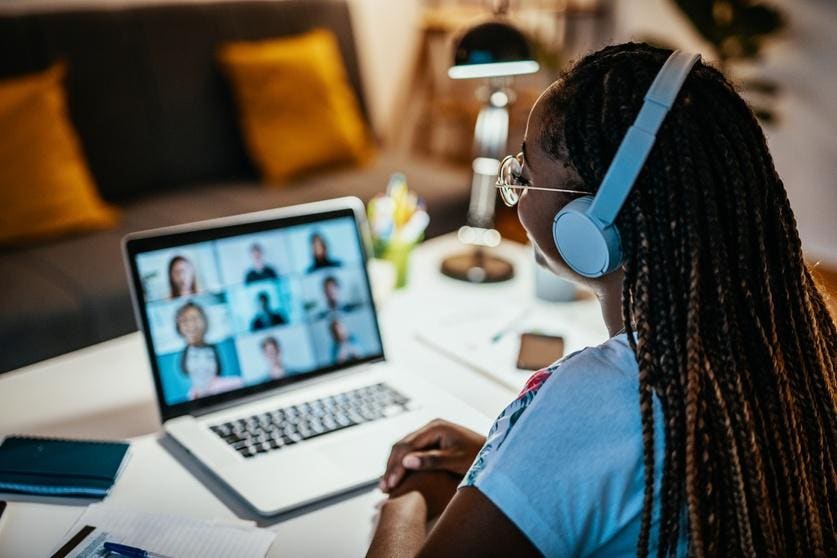When this academic year started, it was a turning point for us at Imperial College Business School. We told our students that we would continue with a hybrid approach, expecting them to be physically on site for 75% or less of their learning contact hours, while providing them with the flexibility to connect remotely the rest of the time.
It was a decision that followed months of discussion about whether we should return, post-pandemic to the traditional ‘in-person’ style of learning. But there was ultimately only one choice, and that was the progressive one.
I believe passionately that business schools such as ours must embrace change, working in line with the way businesses do. It’s our duty to prepare our students to face the workplace challenges of the future.
Innovations in digital learning
The global lockdown accelerated a process that had already been underway for several years. Business schools had been gradually expanding online and providing more digital content, and for us, high quality digital delivery was already a visible component of our operations, especially through our Global Online MBA. Holograms, holo-lenses, VR/AR and other digital innovations had been introduced far before the pandemic began.
We’ve seen how, in the wider world, employees, once resistant to working from home, are actively demanding hybrid work – and how companies that set out a more conservative ‘return to the office’ mandate have faced intense pushback. Back in our educational institutions, students are facing a similar situation. Although some business schools are imposing a ‘back to the classroom’ mandate, requiring students to be physically present, we’re aware that our students want more of what they’ve already experienced – more flexibility, more empathy and more teaching innovations.
Engaging and productive learning
The truth is – this approach works. Over the past two years, with much of our teaching delivery conducted as ‘hy-flex’, we’ve been delighted to receive some of our best-ever student satisfaction scores. Our students recognise that we are taking deliberate steps to establish an engaging and productive hybrid learning environment.
This makes education more accessible and inclusive, for example for students with young families, who can more easily juggle their studies with family life. It allows students the chance to travel for international job interviews, or to visit an ailing relative abroad, whilst still actively participating in classes. If students have more choice, and a strong academic structure with relevant guiding principles, they’ll get a learning experience that better fits their needs. By allowing our students greater flexibility, we are also prioritising their mental wellbeing.
Our teaching approach combines many digital tools and goes far beyond using videoconferencing. We have experimented with sophisticated software solutions to enhance the classroom discussion. Screens and microphones are smartly positioned to facilitate an immersive experience, so that students connecting remotely can see both the teacher and their fellow students, for maximum participation.
Equally critical are the human elements in our classrooms. In 2020, we introduced a strategy we call ‘co-piloting’, where an additional person (the co-pilot) sits in the lecture room to act as a ‘bridge’ between the virtual and ‘in-person’ worlds, checking that what is happening in the room is passing on properly to the remote group, and vice versa. This reduces online and face-to-face barriers for the instructor and ensures the classroom dynamics create a superior learning environment for everybody.
Enabling more, not less, interaction
Hybrid learning in this style has been a revelation. Our students are participating more regularly in lectures. Chat box functions and discussion boards make it easier to ask questions, get clarification, and share views. And the involvement of remote guest speakers fits naturally with the hybrid environment; we can regularly invite top corporate leaders from more regions around the world to address our students.
Face-to-face learning remains a critical part of the business school student experience and our students still embrace all the benefits of being on campus. Social activities, clubs and societies result in experiences that can’t ever be fully replicated online, and we know that students need genuine social, in-person engagement too.
Over the few past years we have seen disruption in the world of business on unprecedented levels, alongside ground-breaking innovations. The world is experiencing rapid advances in generative AI that will revolutionise the way we see the world, on a similar scale to when the Internet was first introduced.
Against this backdrop, it’s even more important for students to successfully master an increasingly hybrid world. Therefore, business schools and higher education remain as relevant as ever. We owe it to our students to adapt to change and prepare them for the global disruptions to come. Whether it’s hybrid learning, generative AI or future unknowns – we want our students to be leading the way.
This article was authored by Leila Guerra, Vice Dean (Education) at Imperial College Business School.
Read the full article here





